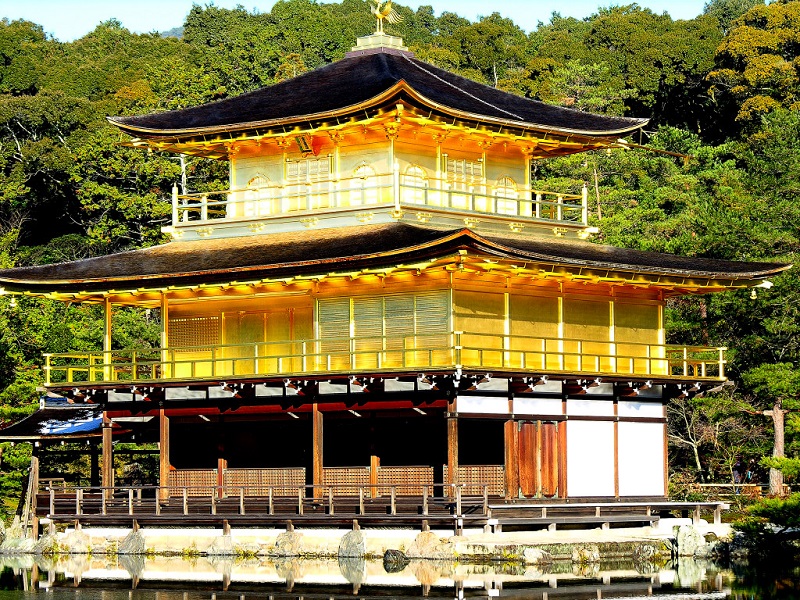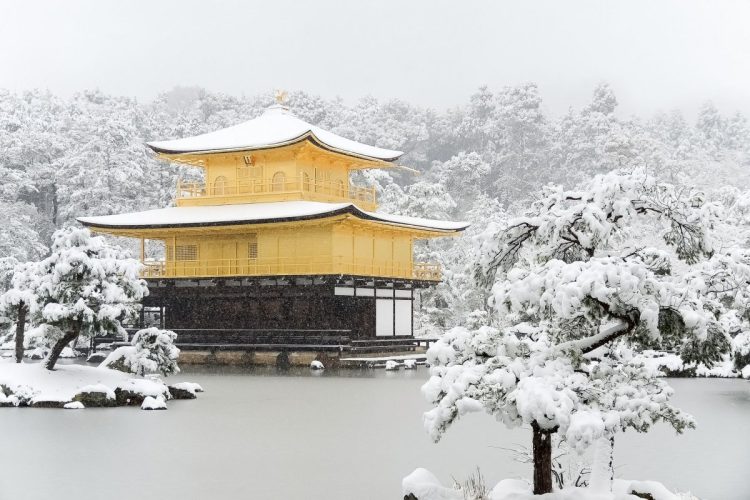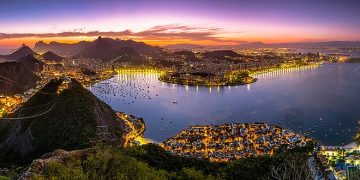Hidden in the bustle of the bustling city of Tokyo is a golden temple – Kinkaku-ji. The temple attracts tourists from all over the world with its unique golden appearance, long history and deep cultural heritage. Let’s explore the history, architecture and cultural value of Kinkaku-ji Temple.
First, the long history of Kinkaku-ji
Kinkaku-ji Temple, formally known as Kagoonji Temple, is located in Tokyo, Japan, and is a long-established temple of the Linji Zongsukokuji School. The temple dates back to the Muromachi period, when it was built by the powerful general Yoshimitsu Ashikaga. Ashikaga Yoshimitsu, a third-generation general of the Muromachi shogunate, had a deep belief in Buddhism and decided to build a temple for himself as a way to pray for national peace and personal well-being.
The name Kinkaku-ji derives from two aspects. First of all, the name “Golden Pavilion” derives from the outer walls of the temple’s core building, the Hall of Seri, which are covered with thick gold leaf and glisten in the sunlight, looking magnificent. Secondly, the name of the temple also implies the dharma name of Ashikaga Yoshimitsu. Therefore, the temple was named Kinkaku-ji and became a major scenic spot in Tokyo and even Japan.
Kinkaku-ji’s history has not been smooth. It has been rebuilt and restored many times over the years. The original Jinkaku-ji Temple was almost destroyed during the Yeon-in Rebellion, with only the temple of Seri surviving. Later, during World War II, Kinkaku-ji was again severely damaged, but fortunately, after the war, the Japanese government rebuilt and restored it to its former glory.

Second, the architectural style of Jinkaku Temple
The architectural style of Kinkaku-ji is unique, showing the essence of traditional Japanese architectural art. The whole temple is mainly wooden structure, using the traditional Muromachi period architecture style. The roof of the temple adopts a unique design of resting on top of the mountain, which appears magnificent; The details of the cornice and dougong of the temple are beautifully carved and have far-reaching meanings.
The core building of Jinkaku Temple, the Temple of Seri, is a masterpiece of architectural style. The building has three floors, each with its own character. The ground floor adopts the traditional Japanese Muromachi era architectural style, showing the simple and elegant beauty with simple and atmospheric lines. The middle layer cleverly integrates Chinese cultural elements to make the building more colorful. The top floor is designed in the shape of a Buddhist Vajra pagoda, implying the solemnity and holiness of Buddhism.
In addition to the architectural style, the garden view of Kinkaku-ji Temple is also amazing. The courtyard of the temple is delicately arranged, and the elements such as rockeries, ponds and stone Bridges are distributed in an orderly manner, forming a beautiful picture. These views are set against the splendour of Kinkaku-ji Temple, creating a visual feast for visitors.
Third, the cultural value of Jinkaku Temple
As a Buddhist temple with a long history, Jinkaku Temple not only has profound religious significance, but also carries rich cultural connotation. First of all, in terms of architectural art, Kinkakuji Temple is a treasure of traditional Japanese architectural art. Its unique architectural style, exquisite wood construction and glittering gold leaf decoration all reflect the excellence and infinite wisdom of Japanese architects.
In terms of cultural heritage, Kinkaku-ji has many precious cultural relics and works of art. These cultural relics, including Buddha statues, murals, paintings and calligraphy, have high historical and artistic value. They bear witness to the vicissitudes of Kinkaku-ji and provide us with a window into Japanese history and culture.
Kinkaku-ji has also had a profound influence on Japanese religion and culture. As a Zen temple, Kinkaku-ji has promoted Buddhist culture and become one of the important representatives of Japanese Buddhist culture. At the same time, it has also attracted countless believers and tourists to come to worship and visit, becoming an important bridge of world cultural exchanges.
Fourth, the tourism value of Jinkaku Temple
Kinkaku-ji Temple is not only one of the symbols of Japanese culture, but also a famous tourist attraction in Tokyo. Every year, thousands of tourists come to see this golden legend. When visiting the Kinkaku-ji Temple, visitors can appreciate the charm and beauty of traditional Japanese architecture, but also feel the strong religious atmosphere and cultural heritage.
In addition to visiting the temple itself, visitors can also stroll through the surrounding courtyards of Kinkaku-ji. In spring, you can enjoy the beautiful scenery of blooming cherry blossoms and splendid architecture. In autumn, you can enjoy the magnificent scenery of the garden full of red leaves. In addition, there are many snack vendors and souvenir shops near the temple for visitors to taste and buy special products.
The influence and significance of Jinkaku Temple
As one of the landmarks of Tokyo and even Japan, Kinkaku-ji has exerted a profound influence on Japanese culture and art. It has not only become one of the representatives of traditional Japanese architectural art, but also provides a window for tourists from all over the world to understand and appreciate Japanese culture. At the same time, Kinkaku-ji has also made great contributions to the cultural exchange and tourism development of Japan.
Kinkaku-ji also carries deep religious significance. As a Zen monastery, it promotes Buddhist culture and inherits the spirit of Zen. Countless believers and tourists seek spiritual comfort and sustenance here, making Kinkaku-ji an important religious shrine.
Tokyo’s Kinkaku-ji Temple with its unique golden appearance, long history and profound cultural heritage has become a popular spot for tourists from all over the world to visit. In this golden legend, we can not only appreciate the charm and beauty of traditional Japanese architecture, but also feel the strong religious atmosphere and cultural heritage. Let’s walk into the Golden Pavilion Temple and discover the story and legend behind this splendid temple!

Legends and stories of Kinkaku Temple
In addition to its architectural and cultural value, Kinkaku Temple is also closely linked to many legends and stories, adding a bit of mystery to this ancient temple.
One of the most popular stories is about the reconstruction of Kinkaku-ji Temple. It is said that after the Kinkaku Temple was destroyed in the war, a mysterious wealthy businessman helped rebuild the temple. After donating a large amount of gold for the gold foil decoration of the temple, the wealthy merchant disappeared into the crowd, never to be seen again. This story not only adds a good story to the splendor of Kinkaku-ji, but also makes people feel the power of kindness and generosity.
Another legend has to do with the guardian god of Kinkaku-ji. According to legend, the guardian god of Jinkaku Temple once appeared at a critical moment to protect the temple from disaster. This makes Kinkaku-ji Temple have a more sacred status in the hearts of believers, attracting countless people to worship and pray.
Seven, Jinkaku Temple visit guide
For visitors planning to visit Kinkaku-ji, knowing some practical tips will make your trip more enjoyable. First of all, the opening hours of Kinkaku-ji Temple are generally from 9 am to 5 PM, but the specific time may be adjusted according to the season and activities, please check the official website or related tourist information in advance to get the latest information.
The entrance fee for Kinkaku-ji Temple is relatively reasonable, and visitors can purchase a ticket to enter the temple. It is worth noting that the ticket design of Kinkaku Temple is unique, usually a piece of paper filled with blessings, which can bless the family. Many visitors choose to keep their tickets as a souvenir or stick them in their home.
During the visit, visitors are required to respect the religious customs and regulations of the temple, keep quiet and dress appropriately. At the same time, photography may be prohibited in some areas of Kinkaku-ji Temple, please pay attention to the tips and follow the relevant regulations.
There are many dining and accommodation facilities around Kinkaku-ji Temple, and visitors can choose the right restaurants and hotels according to their needs. In addition, the transportation near Kinkaku-ji is convenient, and tourists can choose to go by subway, bus or taxi.
As a temple with a long history and unique architectural style, Tokyo Kinkaku-ji Temple not only carries a deep cultural heritage, but also is closely linked with many legends and stories. In the process of visiting Kinkaku-ji Temple, tourists can appreciate the charm and beauty of traditional Japanese architecture, and feel the strong religious atmosphere and cultural heritage. By learning about the history, architectural style, cultural value and visiting tips of Kinkaku-ji Temple, you will be able to fully appreciate the charm of this golden legend.





















